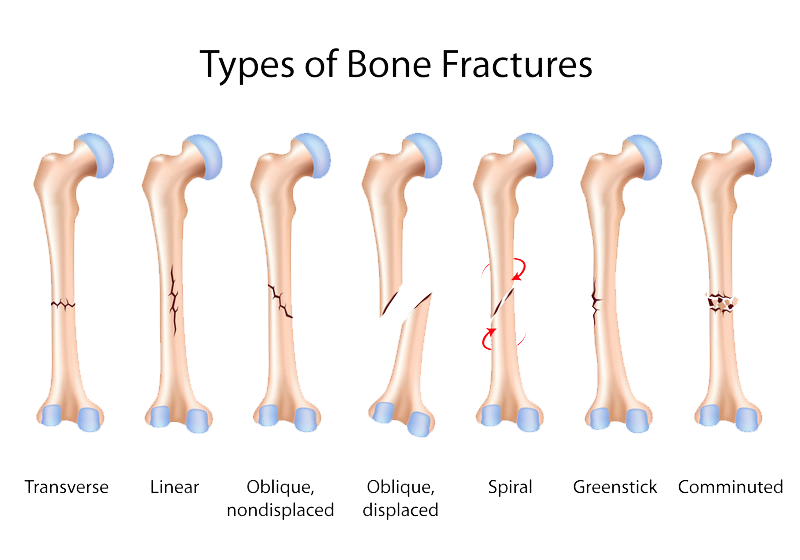Broken Bones
Advanced Care for Broken Bones
More than likely, you’re already familiar with the non-surgical approaches that physicians use to help fractures heal. A doctor applies casts, braces, or splints around the affected area in order to hold the broken bone securely in position and provide support while the body repairs itself. In some cases however, particularly fractures of the long bones, today’s best orthopaedic treatment includes securing the fracture internally with a metal intramedullary nail implanted by surgical procedure.
Your doctor has provided you with this booklet to answer some of the questions you may have about your broken bone and fracture treatment. It will also help you better understand what to typically expect over the next few days and weeks as you leave the hospital, begin physical therapy and follow up with your orthopaedic surgeon and physical therapist.
What is an Intramedullary Nail?
To align the fractured bones and provide optimal healing support, the orthopaedic surgeon makes a small incision through the skin and tissue closest to one end of the broken bones. The surgeon then inserts a small rod-like nail device into the hollow center of the bone, called the medullary cavity. The intramedullary nail forms a self-contained internal splint to stabilize the fracture. This is often done for fractures of the tibia (see below), femur (thigh), and humerus (shoulder).
Potential Advantages of the Intramedullary Nail
- Provides durable, strong and flexible support.
- Allows more exact alignment of the fractured bones for faster healing and may lead to earlier weightbearing.1
- May lead to earlier joint motion for reduced stiffness.1
- Encourages more natural-like motion in uninjured muscles and neighboring joints.
Pin Tract Care With External Fixation
What is External Fixation?
We’re all acquainted with the non-surgical approaches that help a broken bone heal: the doctor applies a cast, brace or splint around a fracture or a corrected bone deformity to provide support during the healing process. In some cases, however, particularly more severe injuries, today’s best orthopaedic treatment includes securing the fracture externally with a device called a fixator that is connected to the affected bone with special bone screws, often referred to as pins. The device remains outside the body (external) and the pins pass through the skin and muscle to secure the bone in proper alignment.
External fixation helps to maintain alignment of the fractured bone when a cast may be inadvisable. However, these devices do require that you take care of them and the pin sites to help prevent infection. Among other complications, an infection may create the need to remove the device and may compromise the proper healing of your fracture or repair.

